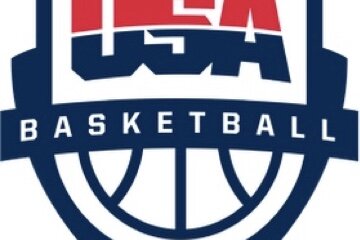
I’m not sure where to start.
Logically it would be with the 200 plus Division I transfers this year.
But then again, I could easily dive in with the extraordinary number of schools that have multiple athletes packing their bags and setting their GPS for the greener grass of another campus.
Or we could begin with the noteworthy number of high profile players not remotely lacking for playing time but still more than willing to endure a one year hiatus for the opportunity to add a new uniform to their wardrobe.
How about I just throw out some food for thought.
Lexie Brown (Maryland), Allisha Gray (North Carolina), Kaela Davis (Georgia Tech), Danielle Ballard (LSU), McKenzie Calvert (USC), Jessica Washington (North Carolina), Sierra Calhoun (Duke), Recee’ Caldwell (UCLA), Sadie Edward (UConn), Stephanie Mavunga (North Carolina), Imani Wright (Baylor)…just to name a few.
Maybe we take a “team” perspective after this past season.
West Virginia, Louisville and Iowa State…two each. Baylor, Florida State, Vanderbilt and North Carolina…three apiece. Cincinnati, Indiana, Marist, Wichita State and Oklahoma State are losing four each. How about five from Minnesota and six each from Illinois State and Eastern Washington? USC has a revolving door with outgoing and incoming transfers. Many other schools could be on this list and several had midyear transfers who took the early train out of town at mid-season.
Sadly, the mass exodus continues to grow each season and even sadder still is that fact that it, seemingly, is becoming more and more acceptable. At one point in our not so distant past transferring was tantamount to wearing the Scarlet Letter. Athletes didn’t pack their bags at the first sign of reality and actually, for even the slightest moment, thought that the resolution to their challenges might lie within…rather than on a campus somewhere else.
The troubling issue beyond the embarrassing large numbers of transfers as a whole is the escalation beyond those humbled individuals at the end of the bench feeling shortchanged on playing time. When you look at the above list of athletes alone you’ve got the starting point guard from a back to a back final four program, an All-ACC first team player and fastest player to 1000 points in program history, three members of a consensus top ranked recruiting class as well as multiple McDonald’s All-Americans. Transfers are not always specifically due to a lack of playing time or on court success. However the increase in high profile transfers along with the explosion in the overall total may well be an indication that there is a greater problem emerging.
It appears that something is amiss in paradise.
These days it’s almost absurd to utilize the word commitment in conjunction with the recruiting process. Making a commitment implies that, like poker, you’re “all in” or like marriage you’re “forsaking all others”. Then again poker involves bluffing and the divorce rate currently hovers just below 50 percent. Today’s athlete walks on campus for the first time like a passenger boarding an airplane and identifying all the exits long before take-off. In the world we now live in it appears that “commitment” has been devalued from a character trait to nothing more than status update.
Utilizing a change of scenery as a means of resolution is hardly exclusive to the college athlete. In fact the genesis of the collegiate transfer problem may well lie in the “new” scholastic resume. When a high school prospect has numerous schools and multiple club teams on their record it’s a safe bet that you’ll know how they’ll react when the going gets tough. It’s hard to hold a college athlete to any standard of ownership or resilience when the folks around her have allowed, and in most cases sought, answers by way of a new address. While it’s true that some school or club changes have their basis in something beyond basketball, it’s foolish to believe that they represent any more than a small percentage in the grand scheme of things. As for the basketball issues…How about telling them to get in the gym rather than get in the car if they don’t like what’s happening on the floor?
The “When the going gets tough, the tough get going out the door” mentality is just part of the transfer traffic jam we see these days. Another element is rushed or hurried decisions in the recruiting process. This occurs in a couple of different ways. Over the past few years we’ve seen and addressed the rash of verbal commitments coming from high school freshman and sophomore athletes. You’re living in a fantasy world if you think “who” and “what” a high school student is remains constant across their teen years. If you’re the kind of athlete getting offers as an eighth or ninth grader, you’re going to get those offers and more as a junior. If a school implies they may not wait on you, your future certainly isn’t their priority and that’s not a coach or staff that’s going to look out for your best interests.
The other rushed and hurried scenario involves that emotional decision that comes after a campus visit…or worse…“on” a campus visit. You’re going to enjoy official and unofficial visits…it’s a recruiter’s job to see to it that you do. Assuming a program views you as a priority, each visit is choreographed from start to finish showing off their best and painting a picture that portrays your dreams coming true in their program. And the next school will do the exact same thing. In the end one will be a better fit than the others but you won’t know that for sure unless you see your options, step away, and make a patient, well thought decision. Take your time and view any pressure from a college coach as a red flag. A large majority of transfers end up at schools that were in their recruiting mix to start with. It’s much more important to get it right later than to get it done sooner.
One element that is indirectly leading to bad decisions and elevated transfer rates is the involvement of outside parties. College recruiters used to deal with the athlete, parents and usually either the high school or club coach. Nowadays the invitation list to the party includes a personal trainer and / or some advice offering wannabe from a camp, service or media entity who never sat on a college bench in their life. Beyond that, many club coaches are now self-inserting themselves into their player’s recruiting process looking to bolster their own insecurities or even position themselves for a job. The inner circle for decisions should be kept small. Coaches should coach and trainers should train. Any advice, solicited or unsolicited, should be limited to the process itself and not on the schools and coaches in the mix. If someone is pushing a particular program or offering warnings about others, they’re looking to advance their own agenda.
The influence of these third parties isn’t just stirring the pot on the front end either. Let their protege’ get on campus and find the road an uphill climb and all too often they begin planting the seed that there may be smoother sailing in another program. They can reach out and gauge the interest of other coaches whose communication hands are tied by NCAA legislation and start the transfer wheels turning long before a player’s current coach has the slightest idea that there might even be an issue. And many times that behind the scenes action actually escalates a simple issue to a point of no return leading to a transfer that could have easily been avoided. Just remember that when things go bad and the transfer process begins these so called advisers and experts won’t be the ones having to start all over again.
Easily one of the major contributing factors to the exorbitant number of transfers is the actual process itself. Simply put…it’s much too easy take your ball and go elsewhere. Some would say sitting out a year and the adaptation process to a new environment in and of itself is more than enough. In fact there are many who believe that basketball should adopt the legislation governing other sports and do away with the year of residency. Seriously? Look at what we’ve got going on now. If the path to the door were made easier the numbers would skyrocket and players would be headed for the door just because they were pulled out of the starting line up or the team stayed a Hilton rather than a Marriott.
It’s fully understood that there are many situations that warrant a change with legitimate and unforeseen reasons. At the same time, regardless of the ludicrous rational and entertaining fiction provided by many transferring athletes for their departure, the reality is that they simply made a bad choice. Whether it be that they committed young without looking at other programs, got caught up in an emotional moment, were blinded by the spotlight of a “big time” coach or listened to the advice of an individual who was serving their own interests…in the end the responsibility of a poor choice still lies with the athlete and her family. Even if you want to point the finger at college coaches who are less than genuine in their recruiting efforts (Big shock, we’ve got our share of them!) the choice to take them at their word still is just that, a choice. Even the most respected coaches warrant extensive scrutiny and vetting before casting your vote with them. While recruiting isn’t the cesspool of politics it is still, in the most literal sense, marketing, sales and unwritten guarantees.
Despite the obvious and how it appears on the surface, the need to increase the “price” of transferring isn’t to penalize the athlete. The hoops they should have to jump through and accompanying penalty should have the teeth to serve as a deterrent to poor decisions out of high school. If an athlete knows she’ll not only sit out a year but also face some additional consequences that initial choice just might get the extra attention and objective consideration that will make it one she can live with for four years.
What kind of “teeth” would make that impact? This is where the arguments start. Losing a year of eligibility as well as sitting out a season would make anyone think twice. Many conferences used to have that particular caveat in place to prevent inter-conference transfers. Of course, like many other factors surrounding NCAA legislation, the potential for action in the courtroom took the wind out of those sails. Think about the impact of actually having to pay for all or part of your first year at a new school should you transfer. The lawyers would be lining up at the doors before the ink dried on that one. And before you jump all over for me for even mentioning such an idea, I don’t remotely think it’s a viable or fair answer. None the less, I would love to find one that would elicit the same impact on a prospect’s approach to her decision making process.
I’ve been in this game for over 30 years and I don’t know what the solution is. What I am convinced of, however, is that any resolution lies on the front end. We’ve got to find a means of helping (or even forcing) high school athletes into making better decisions for the long run. Today’s mentality of “I’ll just transfer if it doesn’t work out” tells you that the perspective is skewed. It’s time to hold them accountable to their coaches, teammates and, most of all, themselves. Nobody is helping a young individual learn about life decisions if we don’t teach them that there are ramifications for not doing your recruiting homework. It’s time to stop making things easier on the next generation and conceding that the answer for your problems is to abandon ship. There’s a societal price tag that comes with that mentality when they move on into the real word on both them…and those of us around them.
Mark Lewis is a national evaluator and photographer for Blue Star Basketball as well as the lead columnist for Blue Star Media. Twice ranked as one of the top 25 Division I assistant coaches in the game by the Women's Basketball Coaches Association (WBCA), he logged 25 years of college coaching experience at Memphis State, Cincinnati, Arizona State, Western Kentucky and Washington State. Lewis serves as a member of the prestigious McDonald’s All-American selection committee as well as the Naismith College Player and Coach of the Year committees.

Latest Articles
-
Christopher Lawlor
/ 1 day agoSPEARHEADED: Americans crush Brazil by 79 points at FIBA U16 AmeriCup quarterfinals; Marcus Spears Jr. puts up 16 points and 9 rebounds
JUAREZ, Mexico — The USA men passed its first test in the knockout stage...
-


Christopher Lawlor
/ 4 days agoSTARS SHINE: Bailey, Costello earn Co-MVPs at 23rd Pangos All-American Camp in Las Vegas; three Santa Margarita (CA) players recognized
LAS VEGAS – The Pangos All-American Camp did not disappoint. For three days the...
-


Christopher Lawlor
/ 6 days ago23rd Pangos All-American Camp tips off in Las Vegas with nation’s elite players congregating for national showcase event
LAS VEGAS – The summer circuit is nearly two months old but it really...
-


Christopher Lawlor
/ 1 week agoU16 USA Women’s Basketball National Team roster selected for 2025 FIBA AmeriCup in Mexico from June 16-22
COLORADO SPRINGS, Colo. — USA Basketball announced today the 2025 USA Women’s U16 National...




